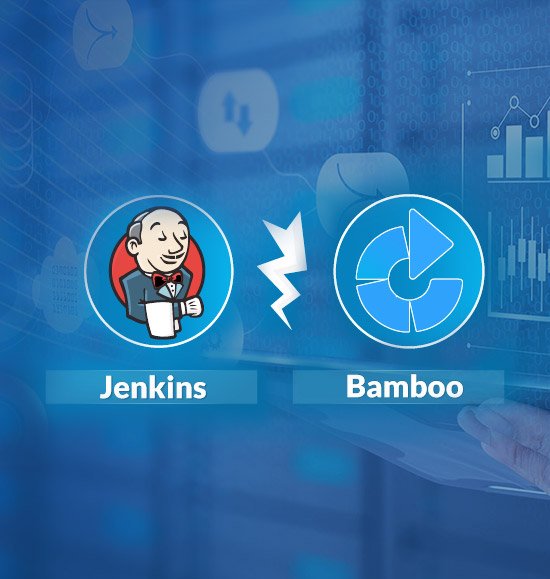Jenkins has evolved to become one of the most important tools for Continuous Integration purposes. It is used to build and test software projects. It also enables developers to rapidly integrate the required changes to the project. Jenkins, not only makes integration smooth and quick, but it also aims to continuously deliver software by integrating a large number of testing and development software. Many startups and established businesses have been using Jenkins to accelerate their development process through automation.
Bamboo, on the other hand, comes with the flexibility to utilize various tools that can smooth and facilitate the development process. This automation server is used for continuous integration and it allows the developers to automatically build, document, integrate, test the source code and prepare apps for development. Bamboo brings along provision for the developers to receive end-to-end visibility into release implementation and spend maximum time writing the code rather than wasting time in integrating various software.
Now, that a basic definition of the two is presented, a detailed differentiation will enlighten novel developers and also those who are in the development industry for quite some time now.
Comparison between Jenkins and Bamboo
Installation and Configuration
Jenkins is simple and easy to install. Since Jenkins is a self-contained Java application, it can be launched immediately in one’s setup. However, before installing Jenkins, developers need to install Java on the target system. Once, Jenkins is deployed, a basic online interface runs the configuration checks. It can be operated on operating system software like Windows, Mac OS, and other flavors of Unix.
The installation and configuration process of Bamboo, on the other hand, is quite complex. Once Java is installed on the desktop, a dedicated user needs to be created for running Bamboo. A home directory needs to be created only after which the Bamboo server could be configured. Though the installation process of Bamboo is pretty lengthy, developers would find its interface to be more user-friendly than Jenkins.
Extensibility and Customization
If one wishes to link one’s application with the Bamboo server, Bamboo REST APIs need to be utilized. These APIs can also be used by administrators who want their scripts to communicate with the Bamboo server. Jenkins, on the other hand, provides remote access APIs in Python, XML, and JSON. These APIs can be used to build a new application, start jobs, and retrieve consumption-related data from Jenkins.
Ease of Use
Bamboo emerges victorious in the battle against Bamboo VS Jenkins when it comes to ease of use. Bamboo’s user interface is relatively easy to use and can be modified as per the needs of customers. However, it all depends on how familiar developers are with the two CI/CD tools. Once, developers lay their hands on Jenkins they will quickly figure out that its major focus is on functionality with usability as a secondary concern. Bamboo, on the other hand, provides detailed information on the build and deployment process for each novel task.
Plugin Ecosystem
Jenkins offers more than 1000 plugins that enable it to integrate with any tool like Git, Maven 2 project, Amazon EC, and HTML publisher. These plugins allow developers to provide the best and most efficient solutions throughout the continuous delivery process. In Jenkins, if the desired plugin does not exist, developers can make a code and share it with the rest of the community.
However, Bamboo on the other hand contains only 100 plugins. The only selling point Bamboo has here is that Bamboo has built-in integrations with Bitbucket, Jira, and Confluence. The dearth of plugins makes customization in Jenkins extremely expensive and complex. Hence, it would be appropriate to say that the plugins of Jenkins are light years ahead of Bamboo.
Community Support
Jenkins being an open-source project includes greater involvement of the community. The greater community support is the sole reason why Jenkins has more plugins than Bamboo. The active community involvement facilitates troubleshooting, experience sharing, documentation, and much more. As Jenkins has been in the development industry for too long now as compared to Bamboo, it wins the race between Jenkins and Bamboo in terms of Community support.
It can be pretty overwhelming to choose one between Jenkins and Bamboo. Developers need to perform a thorough evaluation of these tools from the technical perspective to come to a conclusion. No matter what tool is chosen, one thing is certain developers will expand their knowledge base. If one is looking for a CI/CD tool that offers greater functionality, then Jenkins is the best choice. However, if the good user experience and fine integration is the priority Bamboo should be definitely considered. Hence, at the end of the day, it all depends upon one’s requirements and priorities.








